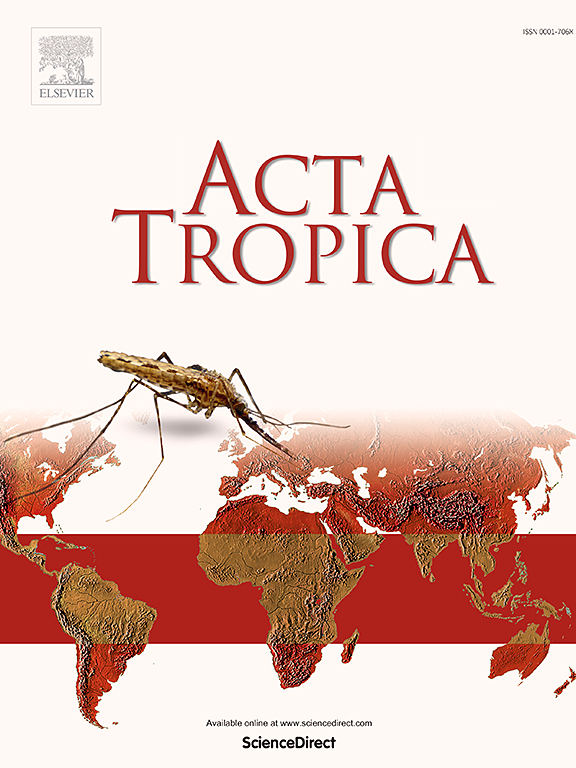The impact of meteorological and socio-economic factors on malaria in mainland China (2006–2015): A study using spatiotemporal analysis and Bayesian model
IF 2.1
3区 医学
Q2 PARASITOLOGY
引用次数: 0
Abstract
Nowadays malaria still is a significant and prevalent infectious disease in mainland China. How meteorological and socio-economic factors affect the distribution of malaria in mainland China? It is worthy to explore their impact on malaria to guide other serious regions. This study selects the total number of malaria cases included in both local and imported cases of malaria in mainland China from 2006 to 2015. According to integrating 6 meteorological and socio-economic factors, we use the spatiotemporal analysis and Bayesian model to quantify the impact of multi-factors on malaria. The results show that malaria is distributed in a northeast southwest direction, with hotspots mainly located in Shandong, Anhui, Jiangsu etc. Precipitation has a significant impact on the incidence of malaria, while socio-economic factors have no significant impact on the incidence of malaria. In addition, malaria in mainland China exhibits significant spatial heterogeneity, with significant differences in (Relative Risk) of different regions. The related results aim to provide the theoretical guidance for formulating the prevention and control policy.
气象和社会经济因素对中国大陆疟疾的影响(2006-2015 年):时空分析和贝叶斯模型研究
本文章由计算机程序翻译,如有差异,请以英文原文为准。
求助全文
约1分钟内获得全文
求助全文
来源期刊

Acta tropica
医学-寄生虫学
CiteScore
5.40
自引率
11.10%
发文量
383
审稿时长
37 days
期刊介绍:
Acta Tropica, is an international journal on infectious diseases that covers public health sciences and biomedical research with particular emphasis on topics relevant to human and animal health in the tropics and the subtropics.
 求助内容:
求助内容: 应助结果提醒方式:
应助结果提醒方式:


